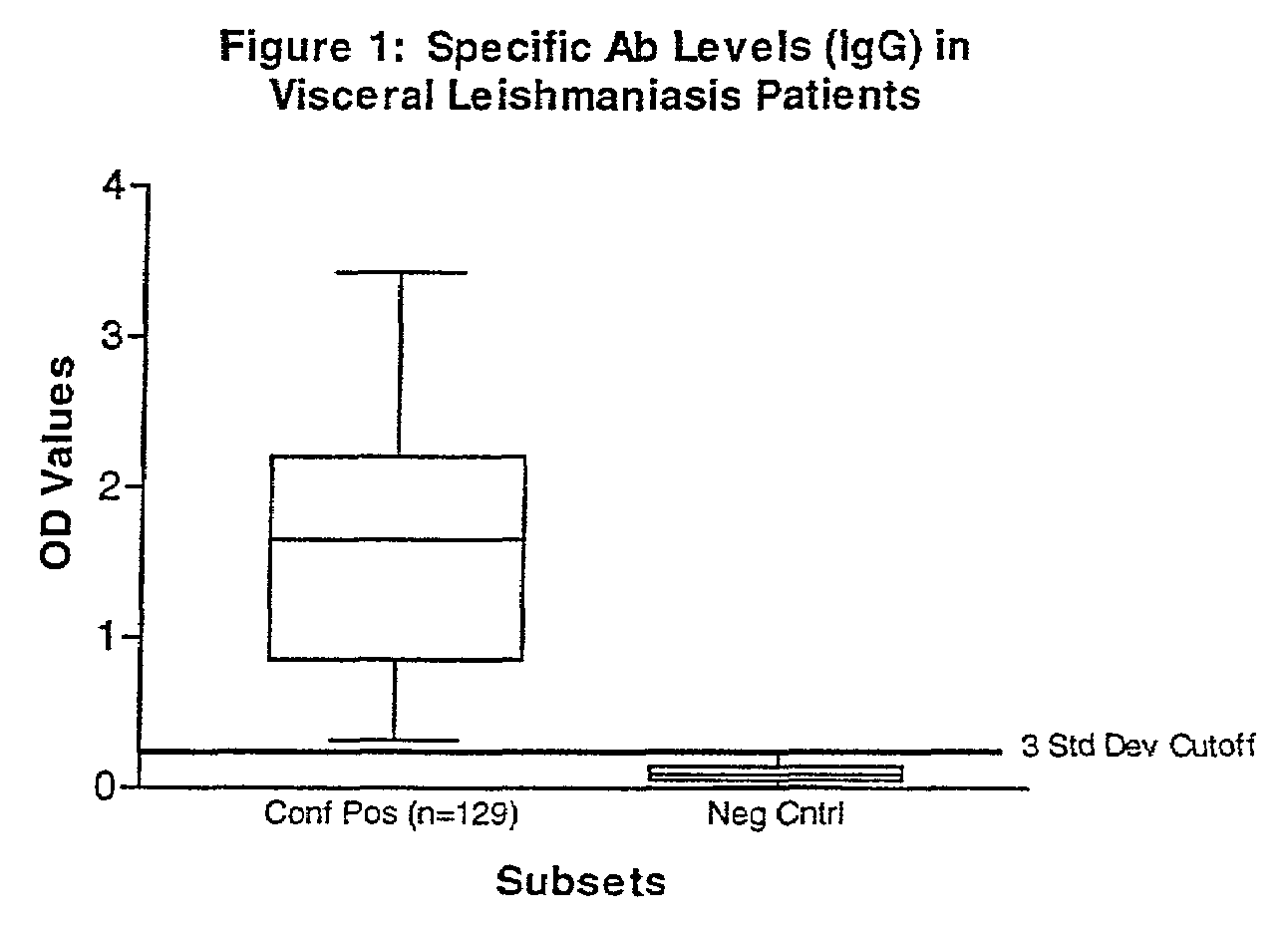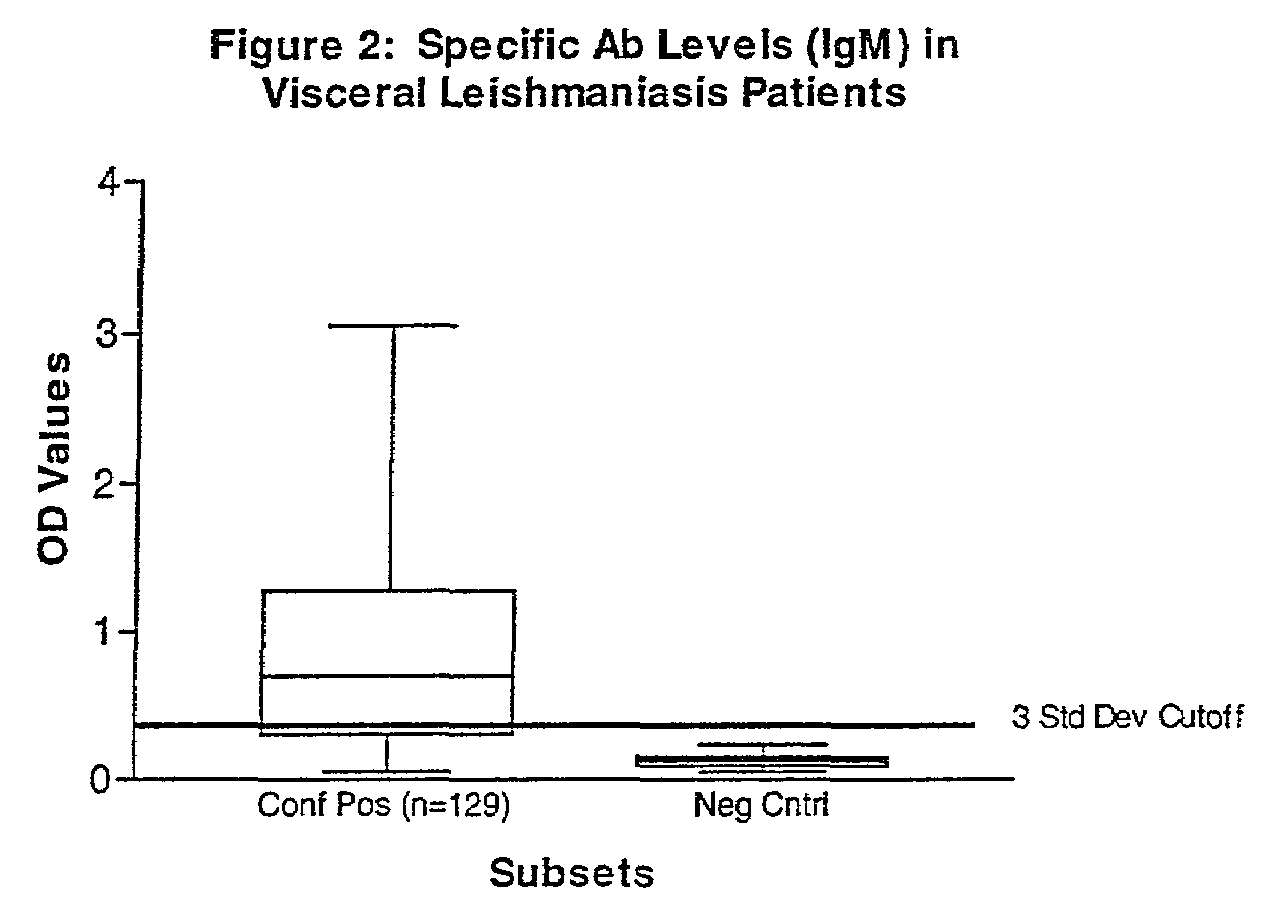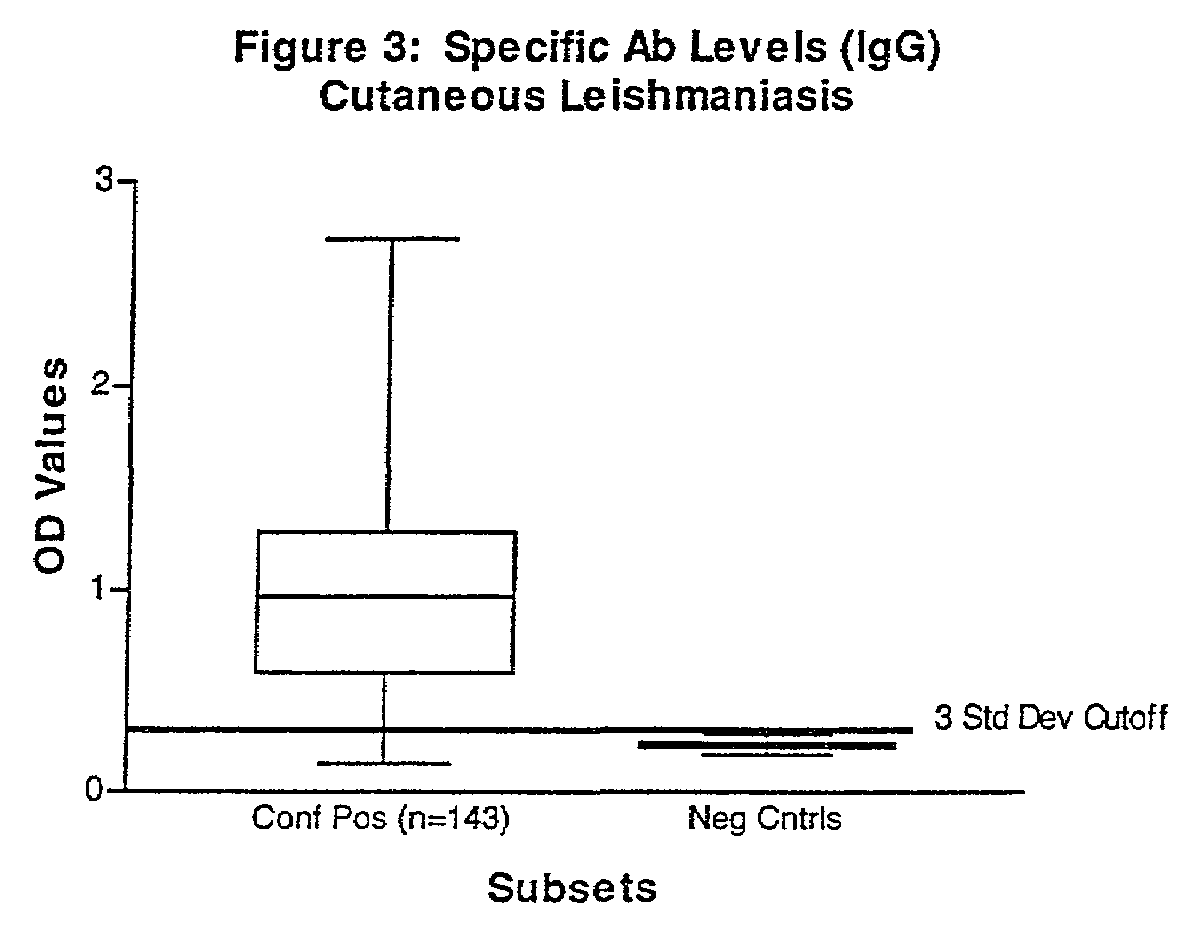Practical serological assay for the clinical diagnosis of leishmaniasis
a serological assay and clinical diagnosis technology, applied in the field of clinical diagnosis of leishmaniasis, can solve the problems of affecting the treatment of patients, affecting the treatment effect, so as to achieve the effect of facilitating the purification of the patient, and reducing the number of patients
- Summary
- Abstract
- Description
- Claims
- Application Information
AI Technical Summary
Benefits of technology
Problems solved by technology
Method used
Image
Examples
example 1
Sera Preparation
[0047]Serum was collected from human patients who were admitted to clinics in Brazil, Italy, North Africa, Nepal and Walter Reed Army Medical Center and who had either splenic aspirates or skin biopsies from lesions that tested positive for Leishmania parasites by culture and microscopy. In total, 129 visceral (Italy, Brazil, North Africa, and Nepal) and 143 cutaneous (Brazil) leishmaniasis patients (136-L. braziliensis-infected, and 7 L. panamensis-infected) with controls were tested.
[0048]Human negative controls were from 12 non-endemic area normal patients with no documented infection or exposure to Leishmania parasites. In addition to the human manifestations assayed, sera from 42 Brazilian dogs with a clinical diagnosis for canine leishmaniasis were tested against positive control sera from a commercial source (Bordier Affinity Products, S. A., Crissier, Switzerland) and 10 negative controls from a pathogen-free, canine research colony (College of Veterinary Med...
example 2
Antigen Preparation
[0049]The Leishmania soluble antigen (exo-antigen) preparation was made by cultivating Leishmania promastigotes in normal supplemented media (RPMI, MEM plus FBS) at 26° C. until the culture reached mid-log phase at a density of about 109 cells / ml. Then the cells were pelleted and washed 6 times in a defined, protein-free medium such as XOM available from GIBCO BRL, formula number 96–0051DJ, RPMI Medium 1640 comprising D, xylose at 0.076 mM, Hepes buffer at 25 mM, L-glutamine, and sodium bicarbonate at 30 mM without phenol red.
[0050]The cells were then resuspended in protein-free medium such as XOM to a final density of 108 promastigotes / ml and incubated at 26° C. in a roller bottle with 0.01% Tween 80 (Sigma Chemical Co., St. Louis, Mo.) for 72 hours. The cells were pelleted by centrifugation at 9,000× g for 30 minutes and the supernatant was collected. The relative protein concentration of the soluble antigens was estimated by measuring the optical density at 280...
example 3
Antibody and Conjugate Production
[0051]The leishmania soluble antigen preparation produced by the method explained in Example 2 was used without an adjuvant to immunize rabbits. The antiserum was pooled and affinity-purified on a Protein A column containing the antigen preparation of Example 2 above. Fractions of the polyclonal antibody (PAb) were conjugated with an appropriate reporter system such as horseradish peroxidase, fluorescein and colloidal gold. These tagged antibodies may then be used in antigen-detection immunoassays such as ELISA, histochemical stain and dipstick test formats. These test formats may be used to detect parasite antigens in tissues and body fluids of mammalian hosts and vectors.
[0052]The rabbit anti-leishmania polyclonal antibody preparation demonstrated high affinity and avidity for the immunogens used to immunize the rabbits. The PAb produced a very striking Western Blot pattern similar to that of kala azar patients. See FIG. 7.
[0053]It is appreciated t...
PUM
| Property | Measurement | Unit |
|---|---|---|
| temperature | aaaaa | aaaaa |
| OD | aaaaa | aaaaa |
| OD | aaaaa | aaaaa |
Abstract
Description
Claims
Application Information
 Login to View More
Login to View More - R&D
- Intellectual Property
- Life Sciences
- Materials
- Tech Scout
- Unparalleled Data Quality
- Higher Quality Content
- 60% Fewer Hallucinations
Browse by: Latest US Patents, China's latest patents, Technical Efficacy Thesaurus, Application Domain, Technology Topic, Popular Technical Reports.
© 2025 PatSnap. All rights reserved.Legal|Privacy policy|Modern Slavery Act Transparency Statement|Sitemap|About US| Contact US: help@patsnap.com



